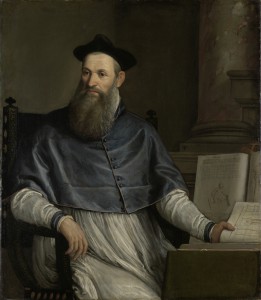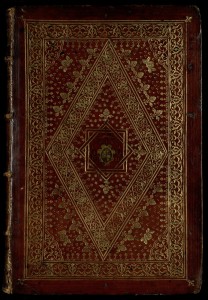
The Venetian patrician Daniele Barbaro (1514-70) was a leading figure in the cultural life of his time. An eminent humanist with encyclopaedic interests, best known as the editor of three editions of Vitruvius' De architectura illustrated by Palladio (1556 and 1567, in Italian and Latin), he published several books and left unpublished writings on a formidable range of subjects. As a member of the ruling élite of Venice, he began a public career as Ambassador to England (1549-51), and in 1550 was appointed Patriarch Elect of Aquileia. He actively participated in the sessions of the Council of Trent (1545-63). In 1560 he was appointed official historian of the Venetian Republic. Together with his brother Marcantonio (1518-95, Ambassador, in turn, to France and to Constantinople, and later a distinguished statesman), Daniele was also a prominent patron of art and architecture. He was a friend of personalities such as Pietro Bembo (1470-1547) and Torquato Tasso (1544-95).
The corpus of Barbaro’s writings reflects the multifaceted nature of his personality and the broad spectrum of his interests and activities. His books include Exquisitae in Porphirium commentationes (1542); Predica dei sogni (1542); Rhetoricorum Aristotelis libri tres (1544); I dieci libri dell’architettura (1556 and 1567); Della eloquenza (1557); La pratica della perspettiva (1568); Aurea in quinquaginta (1569).

Frontispiece
The Biblioteca Nazionale Marciana in Venice holds the majority of his surviving manuscripts, some of which remained unpublished: Cod. Lat. I, 62 (= 2135), Catena graecorum Patrum; Cod. Lat. VIII, 42 (= 3097), De Horologiis describendis; Cod. Lat. VIII, 41(=3069), Scenographia Pictoribus et Sculptoribus perutilis; Cod. It. IX, 29 (= 6590), Tragedia; Cod. It. IV, 39 (= 5446), Cod. It. IV, 40 (= 5447), Trattato della prospettiva; Cod. It. IV, 37 (= 5133), Cod. It. IV, 152 (= 5106), Commentari a Vitruvio; Cod. It. VII, 780 (= 7288), Cod. It. VII, 781 (= 7289), Cronaca veneta.
Since the time of their publication, Barbaro’s books have circulated widely. In particular, his commentaries on Vitruvius contributed substantially to the study and knowledge of Italian Renaissance architecture throughout Europe. One of the two editions of 1567 was written in Latin, which facilitated its diffusion, and new editions were subsequently realised (Venice 1584 and 1629; composite edition Amsterdam 1649). Annotated copies have been found in the libraries of some of the most influential European artists, including Inigo Jones, Vincenzo Scamozzi, and El Greco.

The International Network Daniele Barbaro (1514-70): In and Beyond the Text examined the figure of Daniele Barbaro under the lens of his published and unpublished writings in the context of the European Renaissance. Barbaro’s towering intellect and his ability to combine Aristotelian and Platonic thought in a flexible, yet rigorous synthesis help to bridge the divide between Renaissance classicism and modern science. Barbaro can be said to have laid the foundations for Galileo’s career, learning from the ancients, but intellectually adventurous and strongly empirical in his methods of experiment and observation.
A distinctive cross-disciplinary approach has been adopted in the analysis of Barbaro’s work, involving specialists in the fields of history of literature, art, science architecture and music, history of the book, and religious studies. Like many Renaissance humanists, Barbaro’s interests spanned both the arts and the sciences. This project bridges the arts-science divide and allows his knowledge of sundials, optics, astronomy and mechanics to be reintegrated into his intellectual profile.